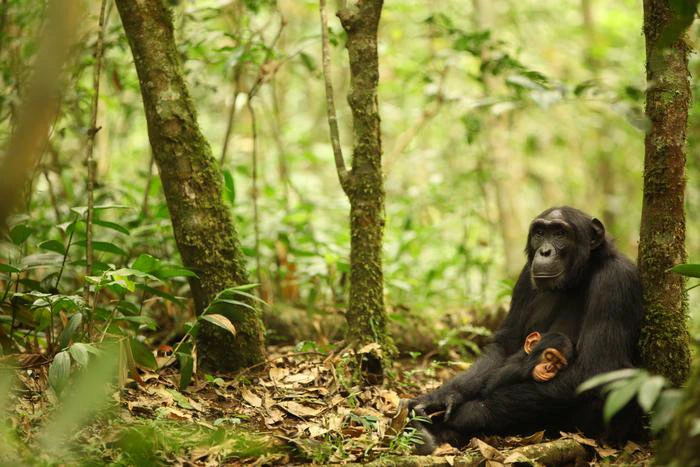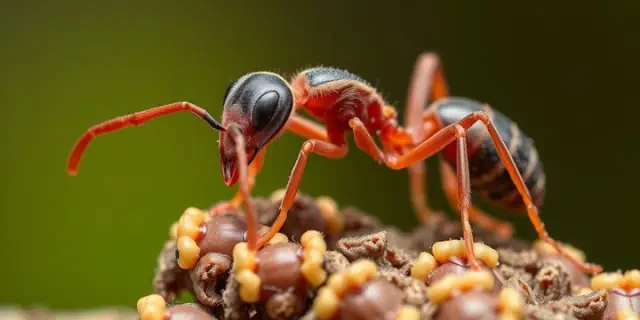
View pictures in App save up to 80% data.
Chimpanzees, our nearest evolutionary kin, exhibit a remarkable ability to genetically adapt to their specific environmental circumstances. A groundbreaking study spearheaded by a group of international researchers from University College London (UCL) has uncovered vital information regarding how these extraordinary primates have developed to thrive in diverse habitats throughout Africa. By examining the genetic changes that support their survival, this research indicates that these adaptations not only shed light on the evolutionary path of chimpanzees but also provide important insights into the effects of malaria on human populations.
Notably, chimpanzees possess more than 98% of their DNA in common with humans, establishing them as vital subjects for research in evolutionary biology and disease resistance. The results of this extensive study, recently published in the prestigious journal Science, pave the way for new insights into how genetic diversity can provide benefits in the face of environmental changes and disease challenges, especially malaria, which continues to pose significant risks for both wild chimpanzees and humans alike.
Chimpanzee populations from various regions in Africa exhibit unique genetic adaptations that correspond to their specific environments, underscoring their ability to thrive amidst ecological diversity. Unlike many other primates that primarily reside in forested areas, chimpanzees have shown remarkable flexibility by inhabiting a range of ecosystems, from open woodlands to savannahs. This evolutionary adaptability is vital, particularly given that chimpanzees are classified as endangered due to threats such as habitat destruction, poaching, and the transmission of diseases linked to human activities.
Professor Aida Andrés, the primary author of the study from the UCL Genetics Institute, highlights the importance of comprehending these genetic adaptations for the survival of chimpanzee populations and their resilience against environmental shifts. The research team analyzed the genetic data of 828 wild chimpanzees from 30 diverse populations, employing advanced genomic methods to explore how genetic variations correspond to the unique challenges encountered by each group in their specific environments.
The research utilized a methodology that focused on collecting and analyzing fecal samples through the Pan African Programme: The Cultured Chimpanzee (PanAf). This cutting-edge strategy enabled the team to obtain genetic information while minimizing interference with the elusive wild chimpanzee populations, thus safeguarding their natural behaviors and habitats. By employing sophisticated laboratory techniques, the study successfully identified exonic variants associated with pathogen resistance, providing insights into the evolution of these genetic traits in relation to local environmental challenges.
In their research, scientists discovered compelling evidence of genetic adaptation linked to various pathogens, particularly emphasizing malaria. The findings indicated that specific genetic variants were more common in chimpanzees living in areas abundant with pathogens, suggesting that malaria poses a significant health risk to these groups. Notably, the genes GYPA and HBB, which are associated with malaria resistance in humans, were identified as key elements in the adaptation of chimpanzees.
These findings emphasize the evolutionary similarities shared by chimpanzees and humans, while also suggesting significant consequences for human health. The genetic closeness raises crucial questions regarding the transmission of diseases across species, such as malaria and HIV, and underscores the necessity of researching wild chimpanzee groups to create effective prevention methods or treatments for these diseases that threaten human health.
Additionally, the study indicates that chimpanzees inhabiting savannah regions have developed specific adaptations to address the unique difficulties posed by lower rainfall, elevated temperatures, and scarce food supplies. Their capacity to endure and flourish in these varied settings offers an intriguing insight into how our human forebears may have faced comparable obstacles millions of years ago during their shift from wooded areas to open savannah landscapes.
An important facet of the research pertains to the wider consequences for conservation initiatives focused on safeguarding the genetic diversity of chimpanzee groups. With the acceleration of environmental shifts driven by climate change and human activities, it is increasingly essential to safeguard the genetic variations in these vulnerable populations to enhance their resilience. Preserving genetic resources is critical for the enduring survival of chimpanzees, as a healthy gene pool can support their ability to adapt to evolving ecological circumstances.
This research exemplifies the worldwide dedication to exploring primate conservation and genetic adaptation through collaboration. Contributions from various institutions in Africa, Europe, and North America emphasize the importance of interdisciplinary teamwork in tackling intricate biological issues. The researchers urge both the scientific community and the general public to interact with their findings and back conservation efforts designed to protect the future of chimpanzees and their ecosystems.
The public can engage in this research through community science initiatives such as ChimpandSee.org, where volunteers are encouraged to help annotate videos featuring chimpanzees. These collaborative projects not only enhance awareness of chimpanzees and the conservation issues they face, but also encourage community participation in scientific activities, ultimately aiding in the understanding and protection of these extraordinary animals.
In conclusion, the results of this pioneering research shed light on the genetic adaptations of chimpanzees that enable them to flourish in various environments and tackle new challenges like malaria. This study underscores the complex relationships between different species and their surroundings, highlighting the urgent need to safeguard the genetic diversity crucial for the survival of both chimpanzees and humans in a rapidly evolving world.
Subject of Research: Genetic adaptation of chimpanzees to different habitats
Article Title: Local genetic adaptation to habitat in wild chimpanzees
News Publication Date: 10-Jan-2025
Web References: DOI
References:
Image Credits: Kevin Langergraber: The Ngogo Chimpanzee Project
Keywords: Genetic adaptation, Chimpanzee, Evolutionary genetics, Malaria, Conservation, Environmental change, Habitat diversity, Primate research, Public engagement, Genetic diversity, Wild populations, Community science.
Explore additional insights from the world of Science.
Sign up to receive the newest updates directly in your inbox.









